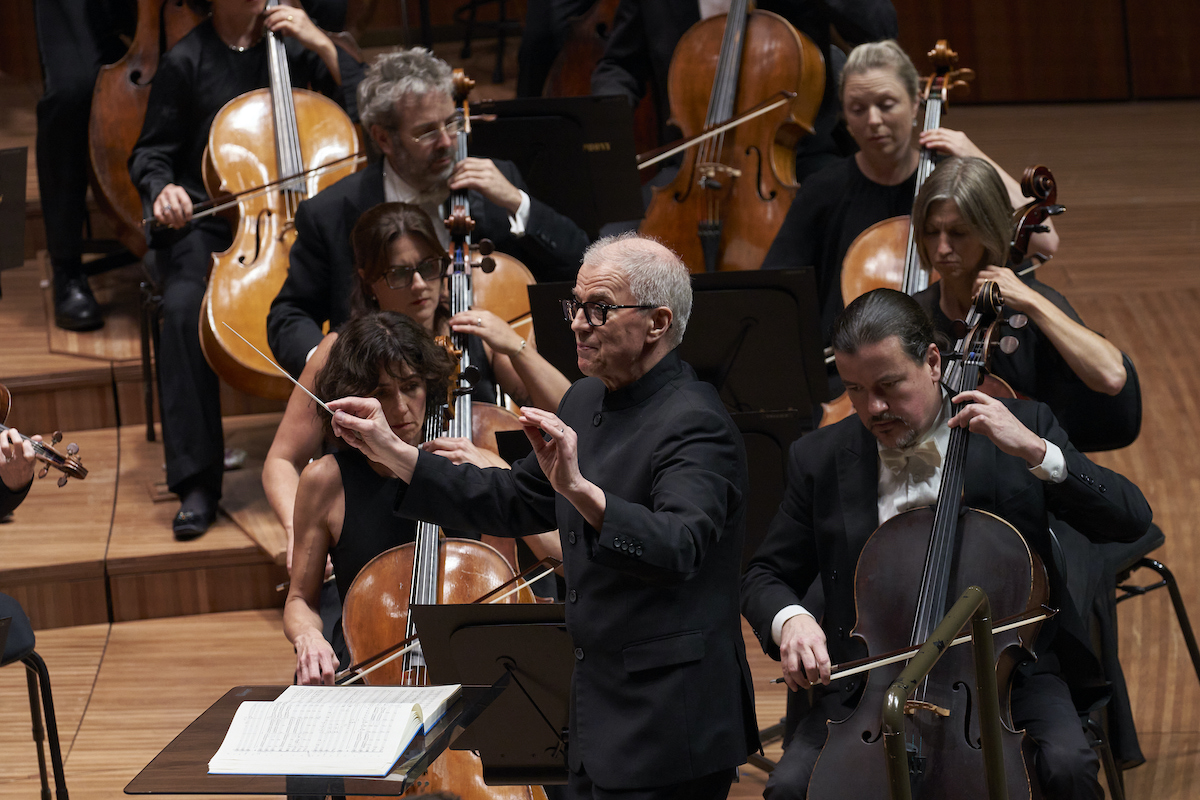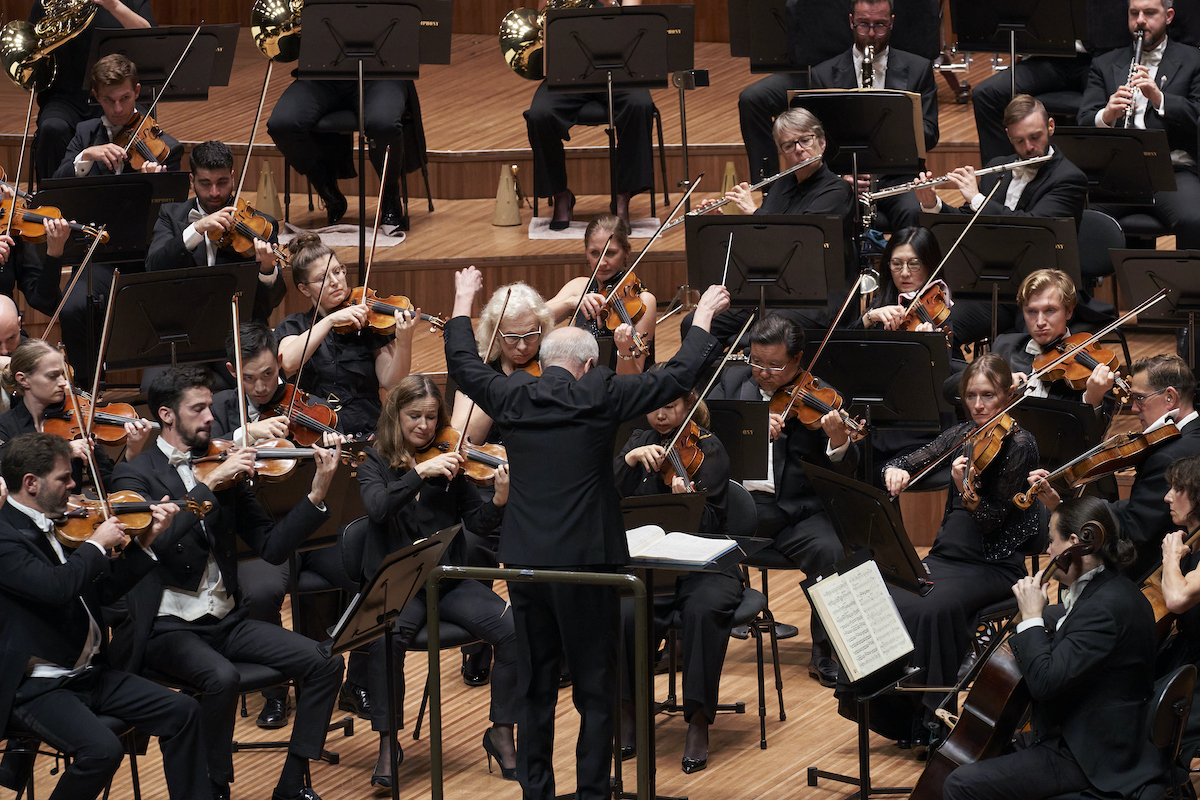It is very rare for the Sydney Symphony Orchestra to present a program of a single composer, unless it’s a Wagner opera in concert or part of a Beethoven series.
Tonight, however, it did. Jean Sibelius, one of the most popular composers with the public, is always welcome – not least when the guest conductor is one of them world’s top Sibelians, Osmo Vänskä.

Osmo Vänskä conducts Sibelius at the Concert Hall, Sydney Opera House. Photo © Jay Patel
Vänskä recorded the composer’s seven symphonies and all the tone poems (in various different editions) for BIS records’ complete Sibelius edition, and the symphonies a second time with the Minnesota Orchestra.
It is clear this music is second nature to him: the cues, the tempo gradations, the drama, and the unerring ebb and flow of the climaxes were all clear as a bell in his conducting. Right from the start, Vänskä balanced the subtle blend of the Finnish composer’s orchestral hues to perfection.
In the first half of the concert, we heard two short orchestral works: Pohjola’s Daughter (1906) and The Bard (1913).
In the first, Vänskä brought coherence to a piece that can seem episodic (based, as most of Sibelius’s tone poems are, on legends from the Finnish national epic, the Kalevala).
Whether leading or providing a harmonic background, the warm tone of the string sections proved a major asset. The Bard, which has a prominent role for two harps, is a lesser known piece: melancholy to begin with, but towards the end suddenly passionate and fervent, before returning to the sombre world of the opening. Both works enjoyed their Sydney premieres tonight.

Osmo Vänskä conducts Sibelius at the Concert Hall, Sydney Opera House. Photo © Jay Patel
The Finnish soprano Helena Juntunen gave us three of Sibelius’s orchestrated songs, alternately dramatic and light-hearted: Autumn Night, Count Magnus and Spring is Flying. A soloist with the Finnish National Opera for 25 years, her technique and placement are excellent and her voice remains fresh and silvery in timbre.
To close the first half, Juntunen and Vänskä performed the taxing concert aria Luonnotar (1913), a work they have also recorded for BIS’s complete Sibelius edition.
Juntunen’s authority made light of the wide range of the vocal line, and moreover, she proved to be a committed singing actress. The two climactic high notes were not an operatic tour de force, as they sometimes are, but a cry of despair (as per the text). A compelling performance that made me wonder why Sibelius never wrote a grand opera.
Well, it turns out he tried. In the late 1890s he worked on an opera, also inspired by the Kalevala, titled The Building of the Boat. Attendance at performances of Wagner’s Parsifal and Tristan und Isolde at Bayreuth undermined his confidence, however, and he turned the music of the unfinished opera into four symphonic legends, forming The Lemminkäinen Suite.
The best known of the four is the second, The Swan of Tuonela, and its sad demeanour was beautifully limned tonight by soloists Alexandre Oguey (cor anglais), and Simon Cobcroft (cello).
Excitement returned for the other pieces, and indeed the whole orchestra played their hearts out in the exciting final tone poem, Lemminkäinen’s Return. The evening was a triumph for the SSO, Vänskä, Juntunen, but most of all for Jean Sibelius.
Osmo Vänskä conducts the music of Sibelius in the Concert Hall, Sydney Opera House on 26 and 27 April.












Comments
Log in to join the conversation.